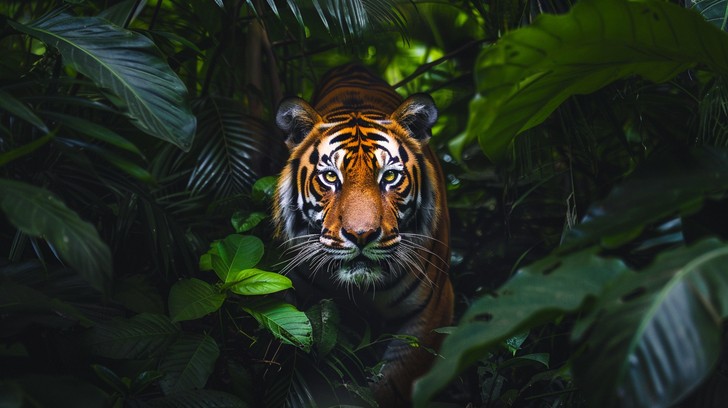In the dense jungles of the Indian subcontinent, where the sun filters through the canopy casting dappled shadows on the forest floor, there lurks a creature of legend, the Bengal tiger. Known for its majestic beauty, formidable strength, and elusive nature, the Bengal tiger is a symbol of power and grace. This apex predator, with its distinctive orange fur and black stripes, has been the subject of fascination and reverence for centuries. However, the Bengal tiger is more than just a majestic animal; it is a critical component of the ecosystem, and its survival is a testament to the delicate balance of nature.
The Bengal tiger (Panthera tigris tigris) is one of the most recognizable animals in the world. Its striking coat pattern, a result of natural camouflage, allows it to blend seamlessly into the long grass and dense foliage of its habitat. This adaptation not only aids in stealth hunting but also makes the tiger a challenging subject for wildlife photographers and researchers alike. The tiger’s stripes are unique to each individual, much like human fingerprints, and can be used to identify specific animals.
Despite their formidable appearance, Bengal tigers are solitary creatures, coming together only to mate. They are territorial animals, with males often claiming large areas that may overlap with the territories of several females. These territories can span up to 60 square miles, and tigers mark their boundaries with scent markings, scratches on trees, and vocalizations to warn off rivals.
The Bengal tiger’s diet primarily consists of large ungulates such as deer, wild boar, and buffalo. Their hunting prowess is legendary, with the ability to take down prey much larger than themselves. A successful hunt can provide enough food for a tiger to survive for several days, during which it will rest and digest its meal.
However, the Bengal tiger’s existence is far from easy. The species is listed as Endangered by the International Union for Conservation of Nature (IUCN), with an estimated population of fewer than 2,500 individuals in the wild. The primary threats to their survival include habitat loss due to deforestation and human encroachment, poaching for their skins and body parts, and conflicts with local communities over livestock and human life.
Conservation efforts have been underway for decades to protect the Bengal tiger. India’s Project Tiger, launched in 1973, is one of the most successful conservation initiatives, with several tiger reserves established across the country. These reserves not only protect the tigers but also the diverse ecosystems they inhabit, including other wildlife species and the countless plants that make up the forest.
The role of the Bengal tiger in the ecosystem cannot be overstated. As apex predators, they play a crucial role in maintaining the balance of the food chain, controlling the populations of herbivores and indirectly influencing plant growth and diversity. Their presence is also a barometer of the health of the environment; a thriving tiger population indicates a well-functioning ecosystem.
In recent years, there has been a glimmer of hope for the Bengal tiger. Thanks to conservation efforts, there have been reports of increasing tiger numbers in some areas. However, the battle is far from won, and continued vigilance and support are necessary to ensure the survival of this magnificent creature.
The Bengal tiger, with its striped shadows and silent steps, remains a symbol of the wild, a reminder of the beauty and complexity of nature. As we strive to coexist with these majestic animals, we must remember that their survival is not just about preserving a species; it’s about preserving the natural world for future generations to marvel at and learn from. The fate of the Bengal tiger is in our hands, and it is our responsibility to ensure that their striped shadows continue to roam the forests of the Indian subcontinent for years to come.
